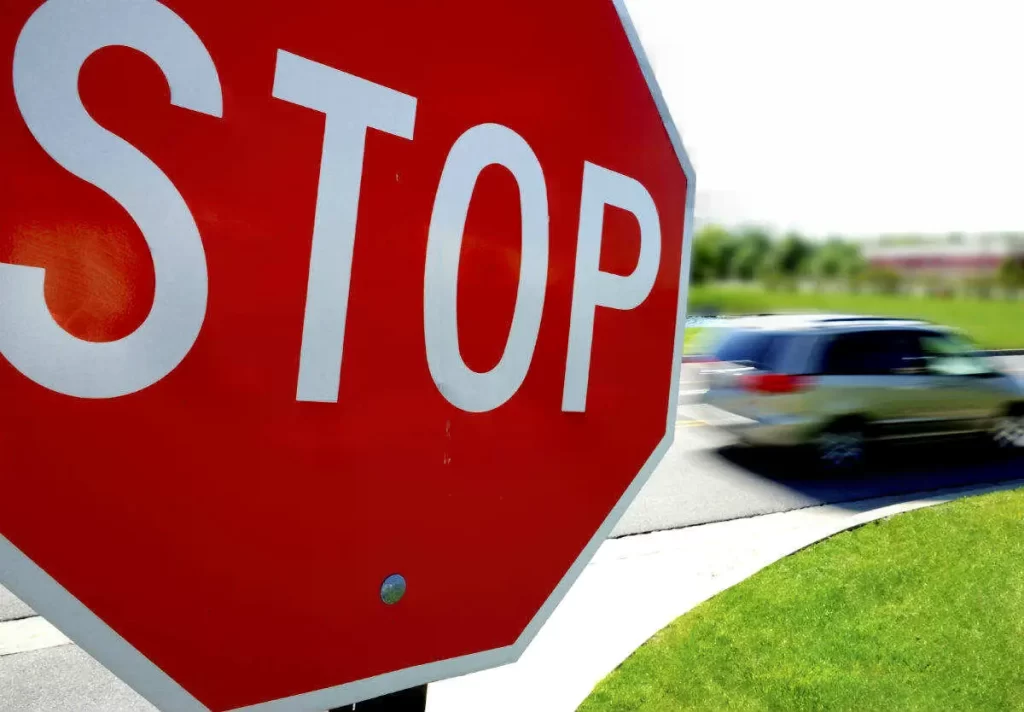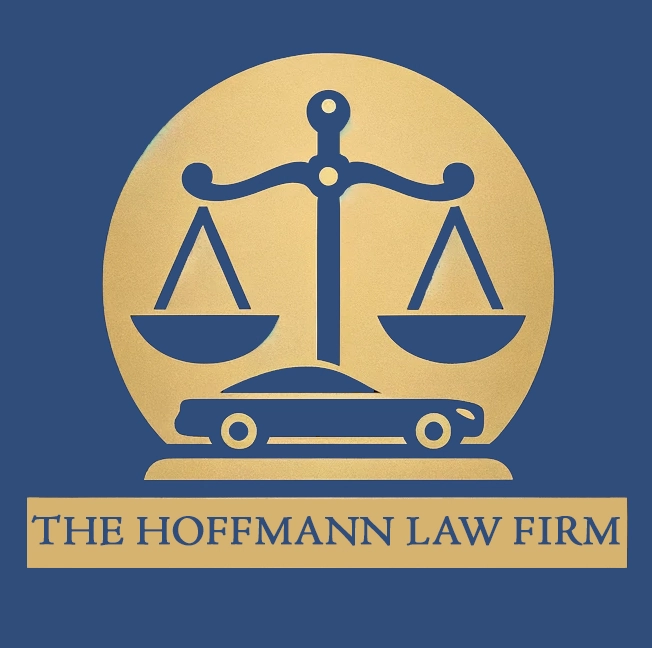Stop Sign Accidents Who’s at Fault
Millions of people drive, ride, or walk through stop sign intersections every day. However, there are nearly 70,000 accidents each year due to a person running a stop sign. A third of those accidents result in injuries.

There are many scenarios where a person may find themselves in a stop sign car accident. For instance, a driver may be hit by someone running a stop sign, or the driver may hit the person that ran the stop sign. In an intersection with a 3 or 4-way stop, more than two cars may be involved. In stop sign violations that result in an accident, proving who is at fault can be challenging.
Car Accidents at Stop Sign Intersections
Stop signs are in place not only to help control the traffic at an intersection but, in some cases, to help keep the speed of moving vehicles down in areas with a high pedestrian population, such as inside a neighborhood or subdivision. Two-way and four-way stop sign intersections exist, depending on traffic flow from all directions.
Not Recognizing a 2-Way Stop Sign Intersection
Another concern is an erroneous assumption that oncoming traffic also has a stop sign at a two-way stop sign intersection.
This type of accident usually involves a driver who follows the law and comes to a complete stop. As they look both ways, they notice an oncoming car but presume that it will have to stop and continue forward right into its path. This leads to a side-impact or T-bone collision, as the oncoming vehicle crashes into yours.
T-bone accidents are often catastrophic, especially for the car that was hit. Without the engine or rear section of the vehicle to protect the driver and passengers, the impact is absorbed almost entirely by the occupants. Severe head traumas, and broken spine injuries, are common, as the body is jerked sideways in unnatural positions.
If you are injured in a T-bone crash, there is a high likelihood that your injuries are grave. We could help you seek compensation for those injuries if the other driver was at fault for the stop sign intersection accident.
Failure to Yield
Another common scenario is failing to yield accidents, where the first car on the scene attempts to proceed through the intersection while a subsequent car does the same.
Rear-end collisions occur with great frequency at stop signs, usually resulting in whiplash injuries for the driver who was hit from behind. This low-impact collision can cause severe soft tissue damage to the neck, requiring medical attention to help cope with the pain.
Other Causes of Stop Sign Car Accidents
Police officials try to pull as many stop sign violators as possible. However, it continues to be a problem. A person may run a stop sign for many reasons. Some of the most common causes include:
- Impatience – some people tend to be in a hurry and don’t want to take the time to stop entirely or at all.
- Reckless driving – some drivers go through a stop sign without even realizing it.
- Distracted driving – some text or talk on their cell phone while driving.
- Drunk driving – when a person drinks while driving, they are generally visually impaired and often run stop signs.
Establishing Liability
According to traffic laws, stopping completely at all stop signs is compulsory. In Missouri, a stop sign violation can lead to fines, revoking your license, or even jail. Drivers are responsible for complying with the laws to keep the roads safe. So if an accident occurs because of a driver who does not stop at a stop sign, it goes without saying that he is accountable for the damages incurred.
The plaintiff has to prove that the other party failed to obey the traffic rules and thereby caused personal injury to him. To counteract this claim, the defendant may try to shield himself by saying that the stop sign was not visible as the foliage or some other signs hid it. So the plaintiff may support his claim with documents and statements from the witnesses, which show that the stop sign was visible when the accident occurred.
Partial Responsibility For The Accident
The defendant may be able to provide evidence that the plaintiff was also responsible for the collision to some extent. Then the plaintiff may be considered partially at fault, and the jury will decide the percentage of his responsibility. He will receive a reimbursement after deducting that percentage from the total amount to be awarded. For instance, if a bicyclist was not riding within the bike lane or a pedestrian was not walking in the crosswalk when the mishap occurred, he may be partially responsible for the accident.
Compensation for Accident Due to Stop Sign Violation
The plaintiff can ask for a certain amount of compensation. To claim the reimbursement, he has to provide documents to show his expenditure. He is generally entitled to compensation to cover his medical bills (present and future, loss of income, and other expenses resulting from the crash).
6 Tips for Staying Safe in Intersections
From drivers changing lanes, red-light runners, and pedestrians attempting to enter moving traffic, a lot can go wrong at an intersection. And if you’re not careful, you could find yourself in the middle of a severe accident. So, how can you stay safe when approaching, entering, and exiting an intersection? Here are six tips to help you stay safe the next time you’re approaching an intersection:
- Pay Attention to Your Surroundings
This may seem like common sense, but it’s essential to be aware of what’s happening around you, especially when approaching an intersection. Be on the lookout for distracted drivers, and be prepared to stop if necessary. Most importantly, quickly glance in both directions before entering an intersection to ensure there’s no oncoming traffic. - Use Your Turn Signals
Turn signals are there for a reason – to let other drivers know what you plan to do. Use them every time you approach an intersection, even if no one else is around. However, avoid turning them on too early, as this could confuse other drivers or give them the impression that you will turn when you’re not. - Don’t Run Red Lights or Stop Signs
Running a red light or stop sign is not only against the law but also incredibly dangerous. You risk hitting another car or pedestrian, and you could cause a severe accident. Why not just slow down and obey the law? It’s not worth the risk. - Don’t Assume Other Drivers Will Yield
Even if you have the right of way, other drivers may not yield to you. Maintain a safe following distance, so you have time to stop if someone does pull out in front of you. - Be Cautious of Pedestrians
Pedestrians always have the right of way, so be cautious of them when approaching an intersection. Even if the light is green, ensure no pedestrians are in the crosswalk before proceeding. - Be Extra Cautious at Night
It’s harder to see at night, so it’s essential to be extra cautious when approaching an intersection after dark. Slow down and look for animals and pedestrians that may not be visible. Use your headlights to help you see and be seen.
Following these tips can help you stay safe when approaching an intersection. However, it’s always important to use your best judgment and be aware of your surroundings, as accidents can happen even when cautious.
Free Consultation with a St. Louis Car Accident Lawyer
Don’t talk to an insurance claims adjuster before speaking with The Hoffmann Law Firm, L.L.C. We can help you avoid making statements that may affect the outcome of your case. The consultation is free; you don’t pay unless we get you money!
Free Consultation (314) 361-4242